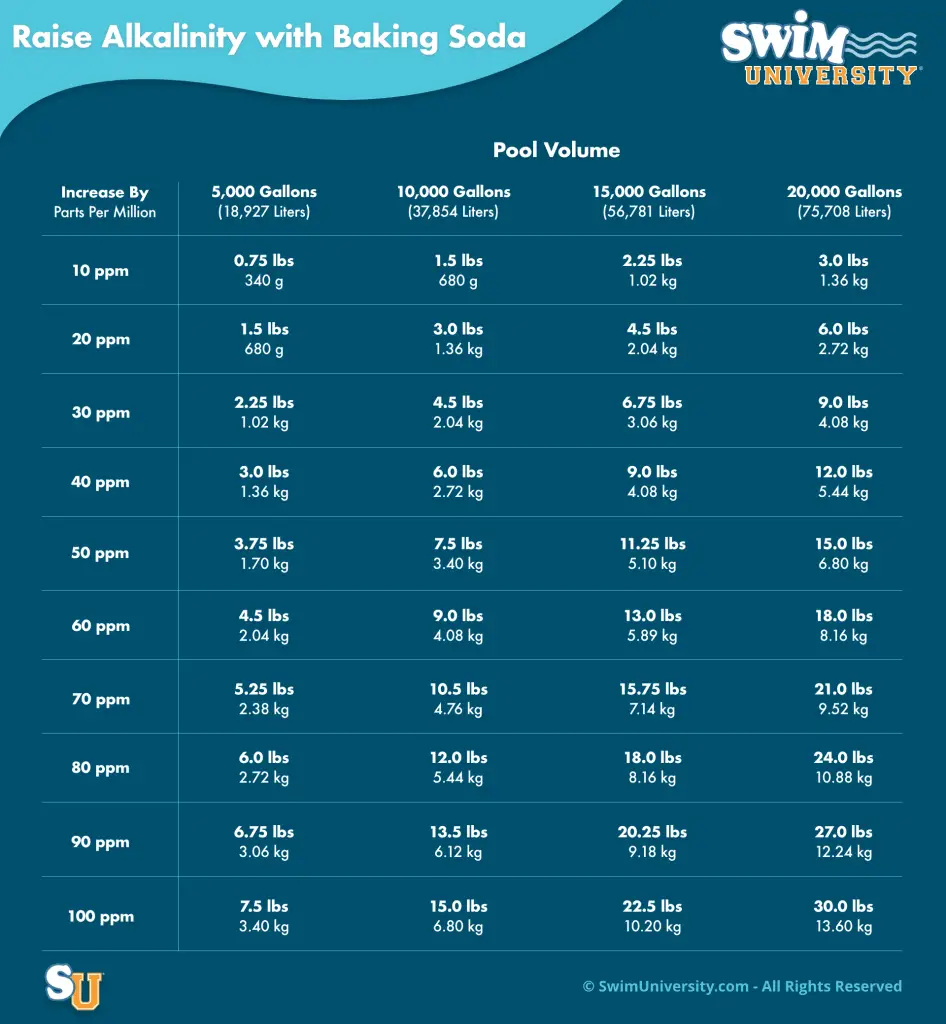Are you wondering how to maintain the proper alkalinity levels in your swimming pool? Having the correct pool alkalinity is crucial for ensuring optimal water balance and chemistry. In this guide, we will walk you through the process of raising pool alkalinity effectively and efficiently.
1. Understanding Pool Alkalinity
Pool alkalinity refers to the level of alkaline substances in your pool water. It is an essential component of water balance, as it helps buffer pH levels and prevents fluctuations. Ideally, pool alkalinity should be maintained within the range of 80-120 parts per million (ppm).
2. Testing Alkalinity Levels
The first step in raising pool alkalinity is knowing the current levels. You can easily test pool alkalinity using a reliable testing kit or by taking a water sample to a professional pool store. Once you have the results, you can proceed accordingly.
3. Using Baking Soda
Baking soda, also known as sodium bicarbonate, is a commonly used method to raise pool alkalinity. It is readily available and safe to use. To increase alkalinity, add a calculated amount of baking soda to your pool water based on the volume and test results. A recommended dose is to add 1.5 pounds of baking soda per 10,000 gallons of water to raise alkalinity by 10 ppm.
4. Distributing Baking Soda
When adding baking soda, it is important to distribute it evenly around the pool. Pour the baking soda slowly into the water while the pool pump and filter are running. This will help in proper dispersion and prevent any localized concentration.

Credit: m.youtube.com
5. Circulating the Water
After adding the baking soda, let the pool pump and filter run continuously for at least 24 hours. This will ensure that the baking soda mixes thoroughly with the pool water and raises the alkalinity levels evenly.
6. Retesting and Adjusting
Once the circulation period is over, retest the alkalinity levels to determine if they have reached the desired range. If the alkalinity is still below the optimal level, repeat the process of adding baking soda until the target range is achieved. Remember to wait for the water to circulate and retest before making any further adjustments.

Credit: waterguru.com
7. Other Methods to Raise Alkalinity
Baking soda is not the only method to increase pool alkalinity. You can also use alkalinity increasers specifically designed for pools, such as sodium carbonate (soda ash) or sodium sesquicarbonate. These products are more concentrated than baking soda and can raise the alkalinity levels more quickly. However, they should be used with caution and following the manufacturer’s instructions.
8. Maintaining Proper Pool Chemistry
While raising pool alkalinity is important, it is equally crucial to maintain proper pH and chlorine levels. Alkalinity, pH, and chlorine are interconnected, and one affects the other. Regularly test and balance these aspects to ensure a safe and enjoyable swimming environment.
Conclusion
Achieving the right pool alkalinity is essential for maintaining a well-balanced swimming pool. By following the steps mentioned in this guide, you can effectively raise pool alkalinity using baking soda or other alkalinity increasers. Remember to test the water regularly and maintain proper pool chemistry for a clean and refreshing swimming experience.





